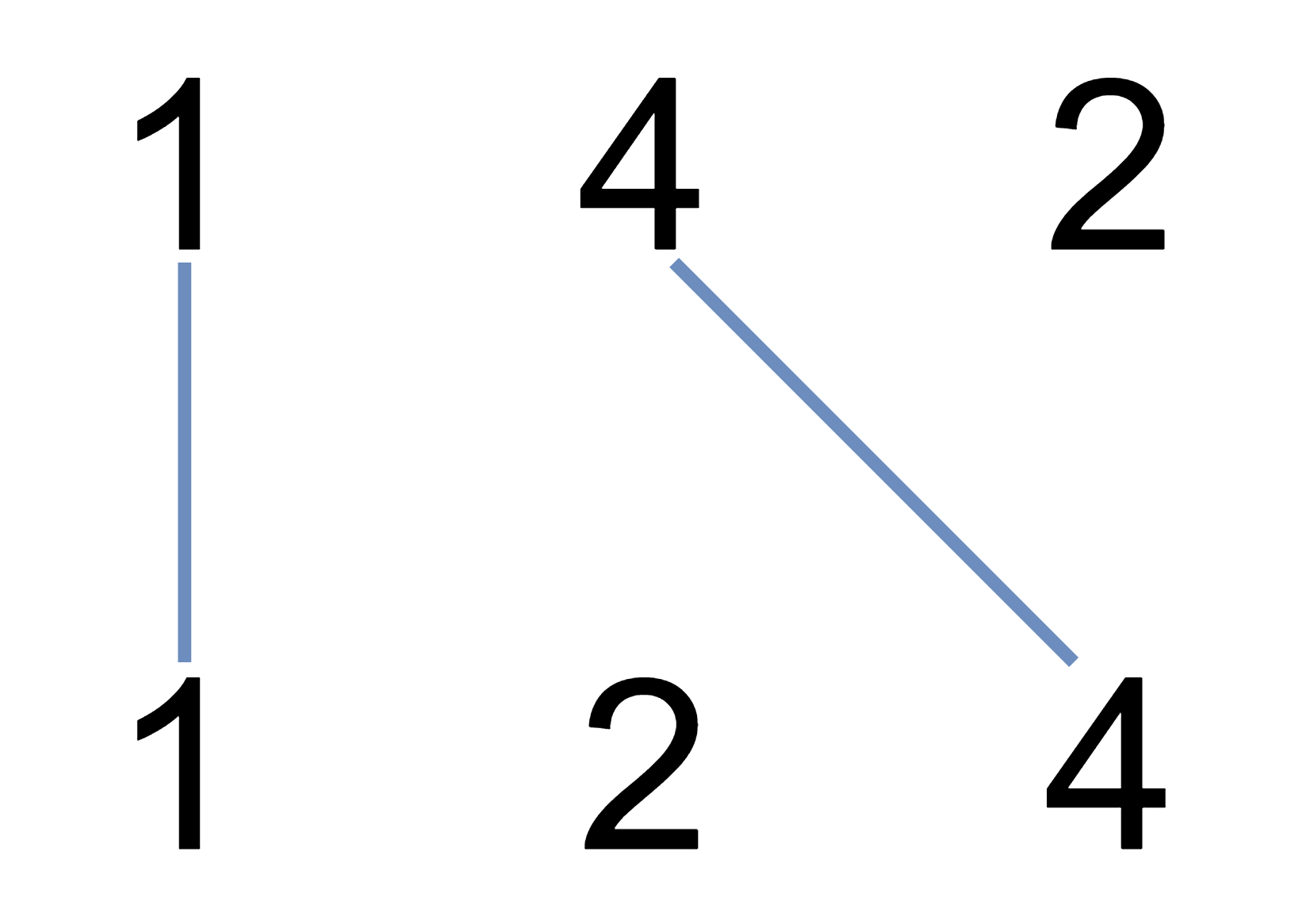Package g1001_1100.s1035_uncrossed_lines
Class Solution
- java.lang.Object
-
- g1001_1100.s1035_uncrossed_lines.Solution
-
public class Solution extends Object
1035 - Uncrossed Lines\. Medium You are given two integer arrays `nums1` and `nums2`. We write the integers of `nums1` and `nums2` (in the order they are given) on two separate horizontal lines. We may draw connecting lines: a straight line connecting two numbers `nums1[i]` and `nums2[j]` such that: * `nums1[i] == nums2[j]`, and * the line we draw does not intersect any other connecting (non-horizontal) line. Note that a connecting line cannot intersect even at the endpoints (i.e., each number can only belong to one connecting line). Return _the maximum number of connecting lines we can draw in this way_. **Example 1:**  **Input:** nums1 = [1,4,2], nums2 = [1,2,4] **Output:** 2 **Explanation:** We can draw 2 uncrossed lines as in the diagram. We cannot draw 3 uncrossed lines, because the line from nums1[1] = 4 to nums2[2] = 4 will intersect the line from nums1[2]=2 to nums2[1]=2. **Example 2:** **Input:** nums1 = [2,5,1,2,5], nums2 = [10,5,2,1,5,2] **Output:** 3 **Example 3:** **Input:** nums1 = [1,3,7,1,7,5], nums2 = [1,9,2,5,1] **Output:** 2 **Constraints:** * `1 <= nums1.length, nums2.length <= 500` * `1 <= nums1[i], nums2[j] <= 2000`
-
-
Constructor Summary
Constructors Constructor Description Solution()
-
Method Summary
All Methods Instance Methods Concrete Methods Modifier and Type Method Description intmaxUncrossedLines(int[] nums1, int[] nums2)
-